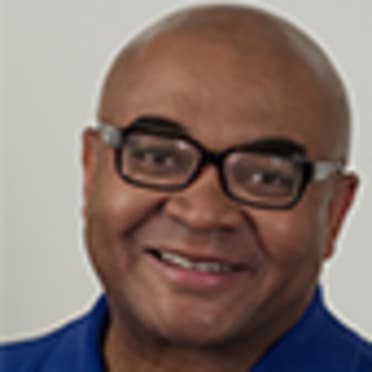Amador learning to execute big league demands
Infielder Adael Amador boiled his 10-game sample with the Rockies down to a simple observation.
“The biggest difference is guys execute their pitches – there are no big misses,” Amador said in Spanish, with bullpen catcher Aaron Muñoz interpreting. “The very few misses they do make are very rare. So it’s taking advantage of those.”
This can be boiled down further. Pitchers aren’t perfect, so hit the pitches that aren’t.
The Rockies knew Amador (Colorado's top prospect, No. 30 on the Top 100 list) wasn’t ready for the Majors when they called him up from Double-A Hartford on June 9, with second baseman Brendan Rodgers out with a slight left hamstring injury. The switch-hitting Amador went 6-for-35 (.171) with a double, with his plate appearances looking more comfortable before he sustained a right oblique strain (a recurrence of an injury earlier in the season) during a June 20 game against the Dodgers.
On Sunday, the Rockies sent Amador to Hartford on a Minor League rehab assignment. Unless an opening occurs in the Majors, he will be optioned to Hartford to continue his path to the Majors. Now, knowing how the destination looks and feels, he can accelerate his progress.
“You can see what a lot of our player development people have seen,” Rockies manager Bud Black said. “There looks to be a hitter in there, even though the Major League stats haven’t shown it. Even the early part of the Eastern League season didn't really show it either as far as average. But there was enough from our viewpoint to see that you can project. The walks will come, but he was an anxious young player.”
Amador was called up after a torrid stretch in Hartford, but for the season, he was hitting .194 in 46 games with the club. But Minor League numbers are often not the determining factor in this type of callup.
The plan set by Hartford manager Bobby Meacham was for Amador to collect knowledge, even if he didn’t collect hits. The purpose of successes and struggles was to strengthen Amador’s thought process through a sample of Major League execution demands. Results good and bad were followed by on-the-spot reviews.
“We had a conversation about that before we called him up – Billy [Schmidt, the general manager], Bobby and I – that we had an eye on him, and all those things Bobby was saying are true enough. Until they experience it, they don’t know."
Here are some assignments:
Calm down
After walking (186) more than he struck out (172) over his 3 1/2 seasons in the Minors, Amador fanned six times to one walk in the Majors.
We have two at-bats: A strikeout at St. Louis in his first game and a solid double at home against the Dodgers in the last one.
Beyond the pitch location and the result, do you see the difference? We’re not talking getting all swing-coach-y and bat-path obsessed. Just the movements.
A hint from hitting coach Hensley Meulens: You probably can’t. But after working with Amador all spring and watching video of his bats with Hartford, Meulens and assistant hitting coaches P.J. Pilletere and Andy González picked up rushed, unnecessary pre-pitch movements. The way the coaches taught was: no matter how much Amador moves, the pitch is faster than his movements – so make sure the bat is in a place where he can drive the baseball.
That’s how he doubled.
“We were working on that before the game, and it worked out for him,” Meulens said. “That’s gratifying for Andy and P.J. and me, to see guys adjust and produce.”
There’s an app for that
Technology is used throughout the organization, and Amador said he has always augmented it by looking at video of the opposing pitcher and typing himself study notes on his phone.
Amador used a couple of innovations Rockies Major League hitters use – one to review swing decisions on each pitch, another that gives multidimensional feedback on every at-bat. Those apps aren’t available to Minor Leaguers, but the readings are and they give Amador a baseline for study.
Talk the talk
In the dugout before leaving, Amador said he took the time to seek information from mostly everyone. He requested quick pointers from the hitter in front of him before stepping to the plate, and in the dugout conversed in Spanish with Meulens and González, and with third-base coach/infield instructor Warren Schaeffer.
“I was glad that he came up here, although to me, he wasn’t ready, but it was a good experience,” González said.
Let the feeling flow
There is an example on the squad. Rodgers didn’t get to certain balls at first, then became a Gold Glove winner in 2022. So balls that got by Amador provided information, not a verdict.
Each player carries a positioning card in his back pocket, but an infield of a Gold Glover and two finalists (third baseman Ryan McMahon and shortstop Ezequiel Tovar) didn’t develop by acting like postage stamps glued where the analytics say they should be. There’s freedom to move based on count, the hitter’s swings and how the pitcher is doing.
“I want them to feel like they’re a unit and it’s their game,” Schaeffer said. “If they feel something and they see something and want to move, they have total freedom to do it. ‘Tovie,’ ‘Mac’ and ‘B-Rod’ do it all the time.
“During the last homestand, Amador felt something and wanted to move and looked into the dugout, and I was like, ‘Dude, do it.’ That’s part of the learning process.”


